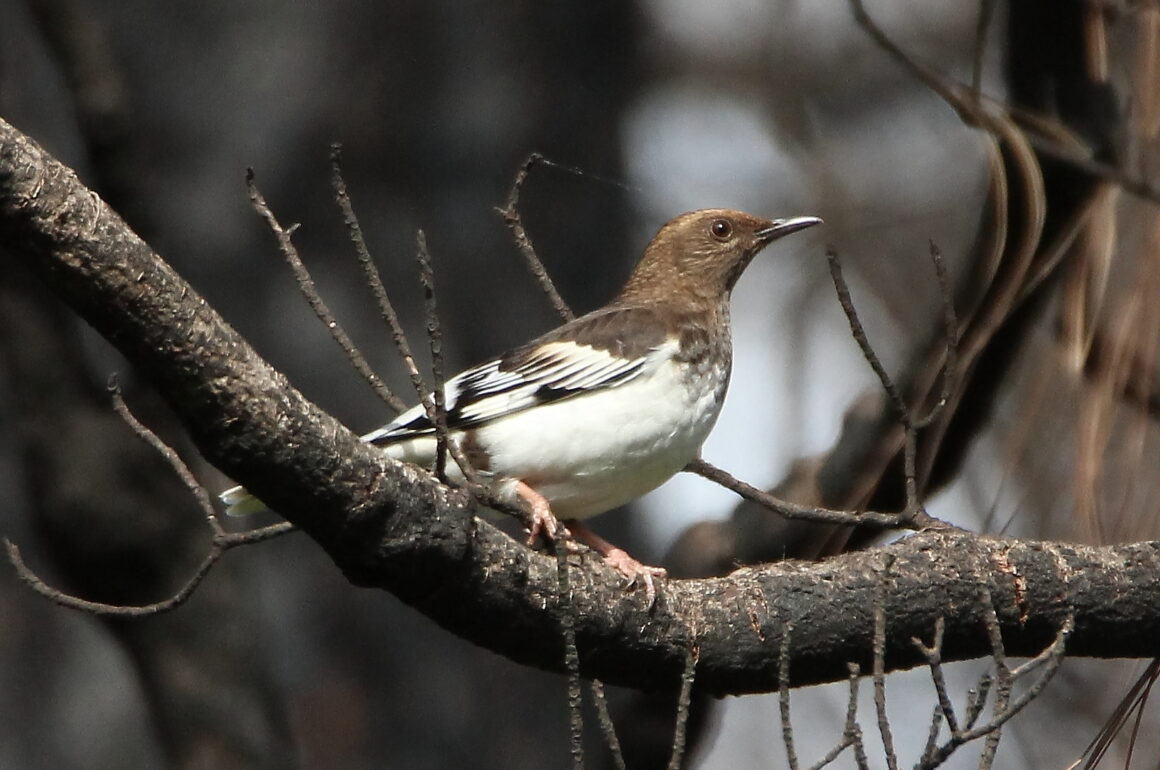
If, someday, you make your way to Morelia, and ask for me to show you some of our best birds, I will surely do my best to accomodate you. In the case of most of these wonderful bird species, I probably know where they are most likely to be found.
Just don’t ask me to show you an Aztec Thrush.
The Aztec Thrush is a beautiful bird, with bold dark/light plumage patterns. These patterns make it surprisingly hard to see. It rarely vocalizes, and moves slowly, if at all, as it forages in dense foliage. And yet, the Aztec Thrush seems to rarely exhibit these behaviors twice in a single spot.
In ten years of hardcore birding, I have seen Aztec Thrushes only four times, never twice in the same year (2017, 2018, 2019, and now, 2024). Only the 2017 and 2019 sighting were in the same general area; although the first sighting there was of a family unit, and the second was of a single bird.
On January 29th, I decided to investigate the results of a major forest fire last year at one of my favorite routes. A huge swath of forest burned, and while Michoacán’s forests are very well adapted to low-intensity fires, only about 30% of the trees in this area look like they will come back from this high-intensity conflagration.
But to my surprise, at ground level the area was now “ablaze” with salvias and other flowers.
Hummingbirds buzzed everywhere, as most of these flowers are designed just for them.
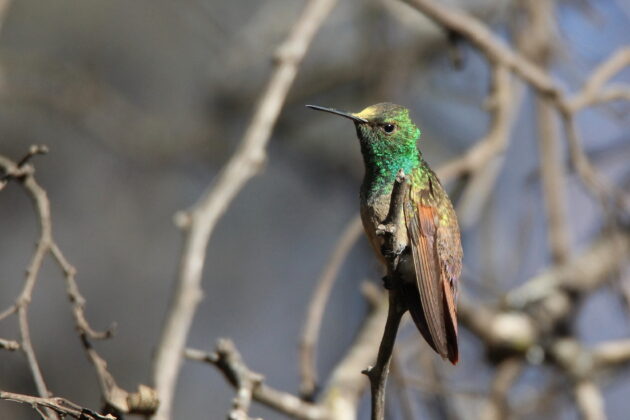
Berylline Hummingbirds were by far the most abundant.
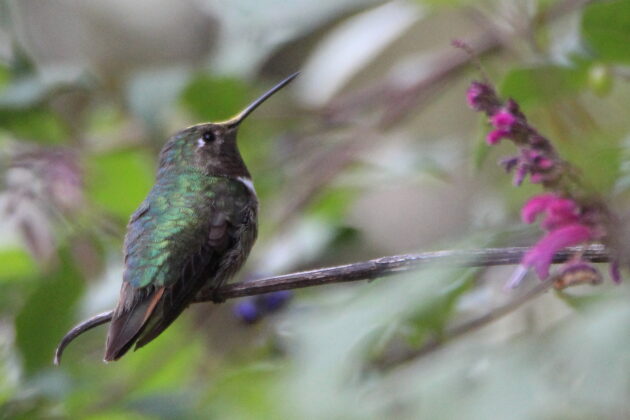
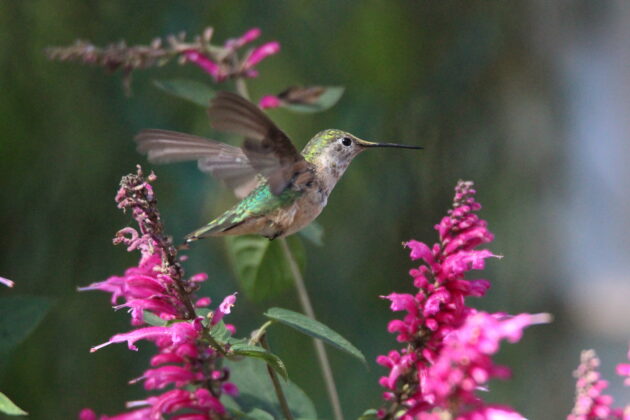
But there were also a good number of Broad-tailed Hummingbirds…
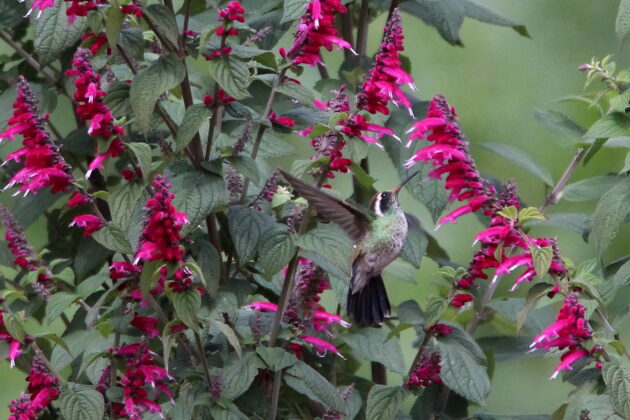
…and White-eared Hummingbirds, in the remaining shadier areas.
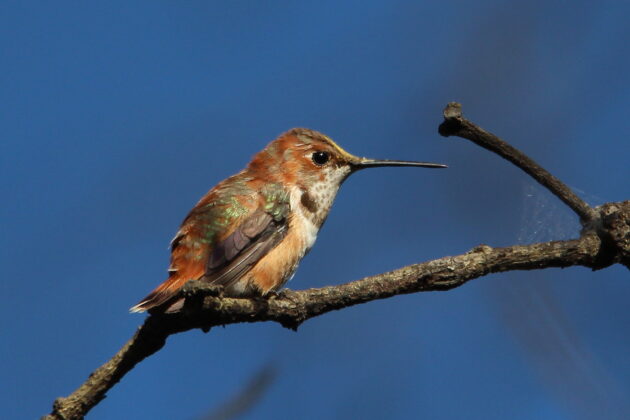
Migratory Rufous Hummingbirds brought up the rear…
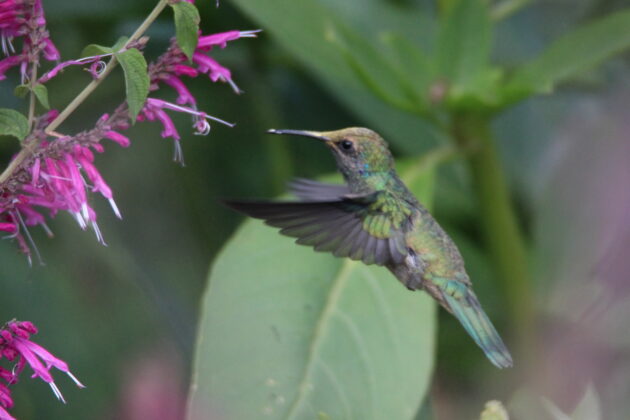
…along with a single Mexican Violetear that I was able to see, although a couple more sang from above.
The flowers also attracted quite a few Nashville Warblers, Orange-crowned Warblers, and Hooded Orioles.
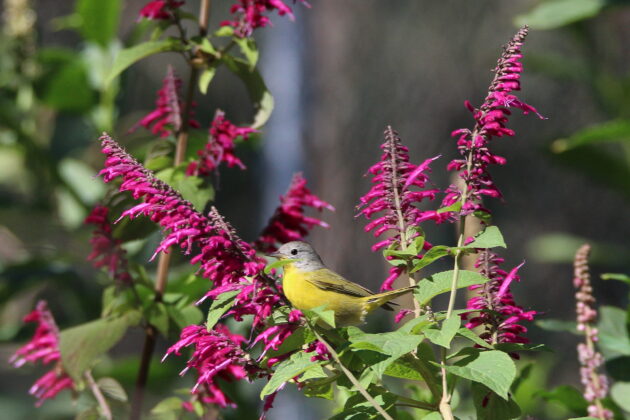
Apparently the normally insect-eating warblers, like the hummers and orioles, like a sip of nectar now and again.
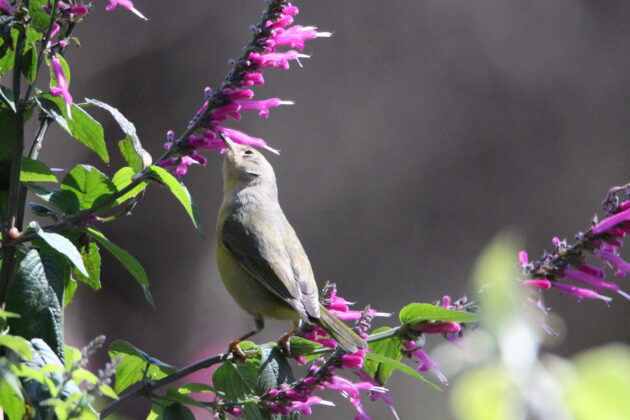
Another local species that loves burnt-over areas is the Gray Silky-Flycatcher. I probably saw a couple hundred of these lovely birds, although their constant comings and goings made an accurate count impossible.
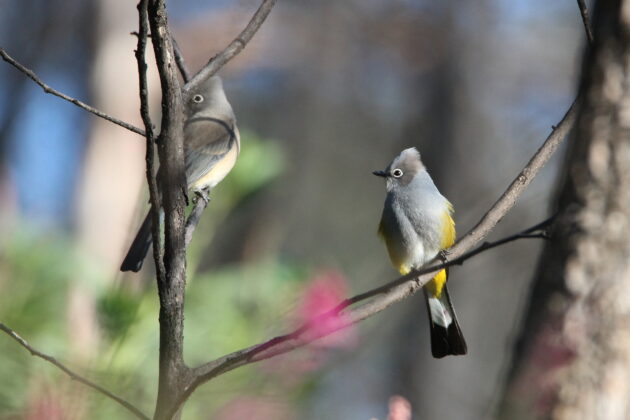
American Robins were also unusually abundant in the burn zone. While present in Michoacán, you are usually more likely to see our endemic Rufous-backed Robin here. But I saw a good number of perched American Robins this day, and many more flew overhead among the sadly bare tree trunks.
I was checking out some of these American Robins, moving through the the burnt branches, when I saw the unmmistakeable pattern of a single female Aztec Thrush. It was a brief encounter, but long enough for a few photos.
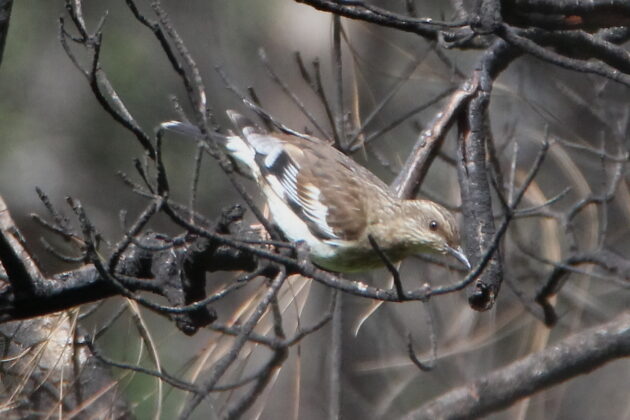
And then, she was gone. I turned my attention to a few more Robins.
But wait! There she was again! Except that it turned out “she” was not there, as this was a “he”. And Aztec Thrushes being as they are, this male stayed immobile as I gradually drew closer. My photos got a bit better…
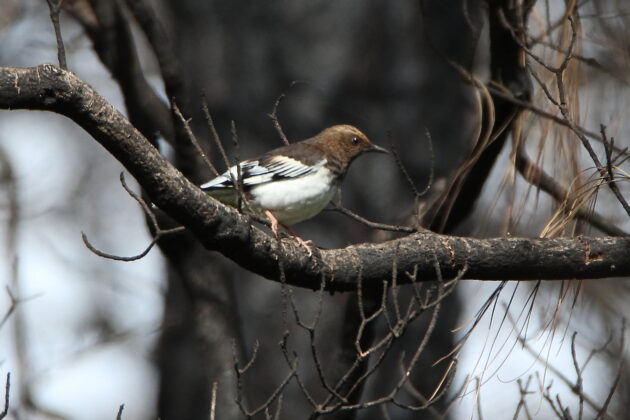
And then, boom! The money shot!
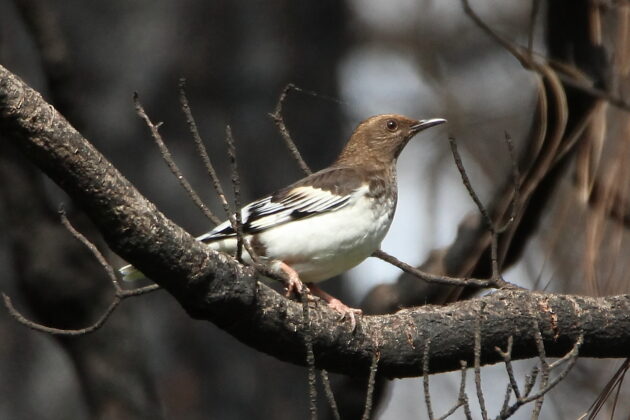
Once I felt I had gone as close as ethically possible, I stopped and took photo after photo of the male. After some 45 shots of the same bird, in the same pose, I tired of photographing it. Until finally, it turned around and showed me a view from behind. And then, it took wing, perched briefly directly above me, and was gone.
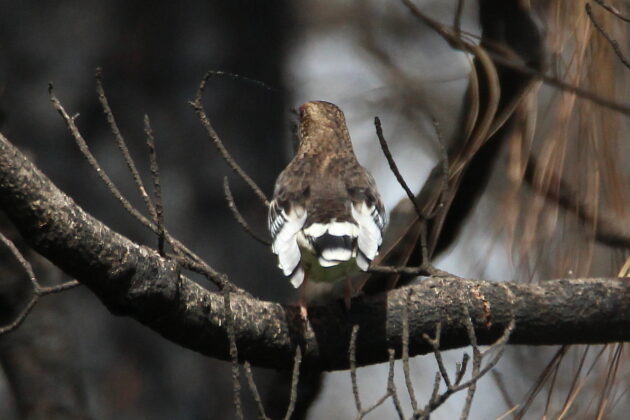
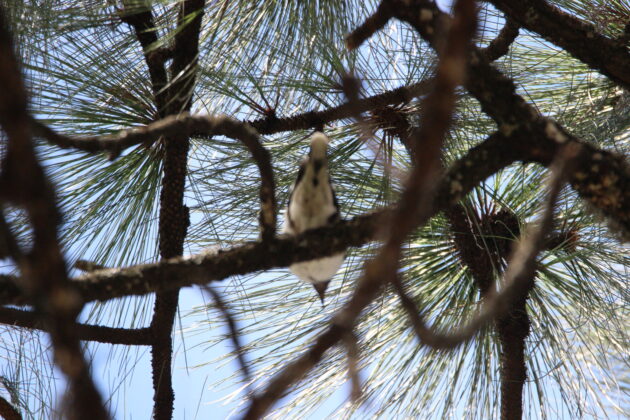
And that was it: My first encounter with Aztec Thrushes in five years. They are out there, always. I just don’t know where, or when, I might get to see them.
While we are on the subject, central Mexico also offers the Aztec Rail, a species once considered a race of the King Rail. It used to be a fairly reliable find in a water treatment project at the town of Cuitzeo, half an hour from my home. But the project was discontinued and the site dried up. I have now only seen Aztec Rails twice in the past five years, neither time at that site.
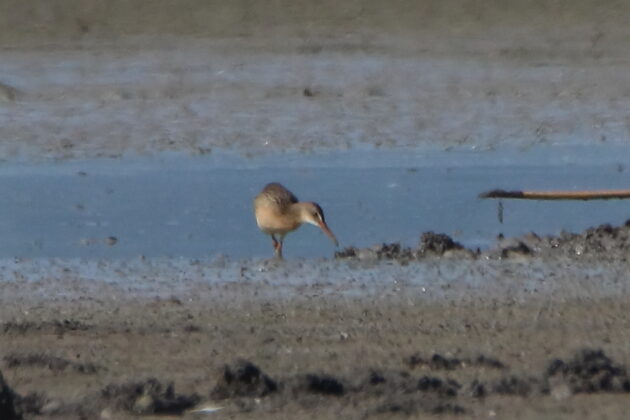
Aztec Rail, Lake Cuitzeo, July 2023
So if you come to Michoacán, go ahead and challenge me. Ask for a Transvolcanic Jay, Mountain Trogon, Chestnut-sided Shrike-Vireo, Sparkling-tailed Woodstar, or Black-polled Yellowthroat. There’s a good chance I can find them all.
But please, don’t ask for an Aztec.











You’re on, Paul! I will come over and ask… should make for an interesting post
Oh. Well … So I guess asking you to give an Aztec Thrush directions over the Atlantic to SW Germany is out of the question, too?
Dang.
Well, they do move around, Jochen. But a quick glance at eBird suggests that the U.S. border is about as far as they’ll go.